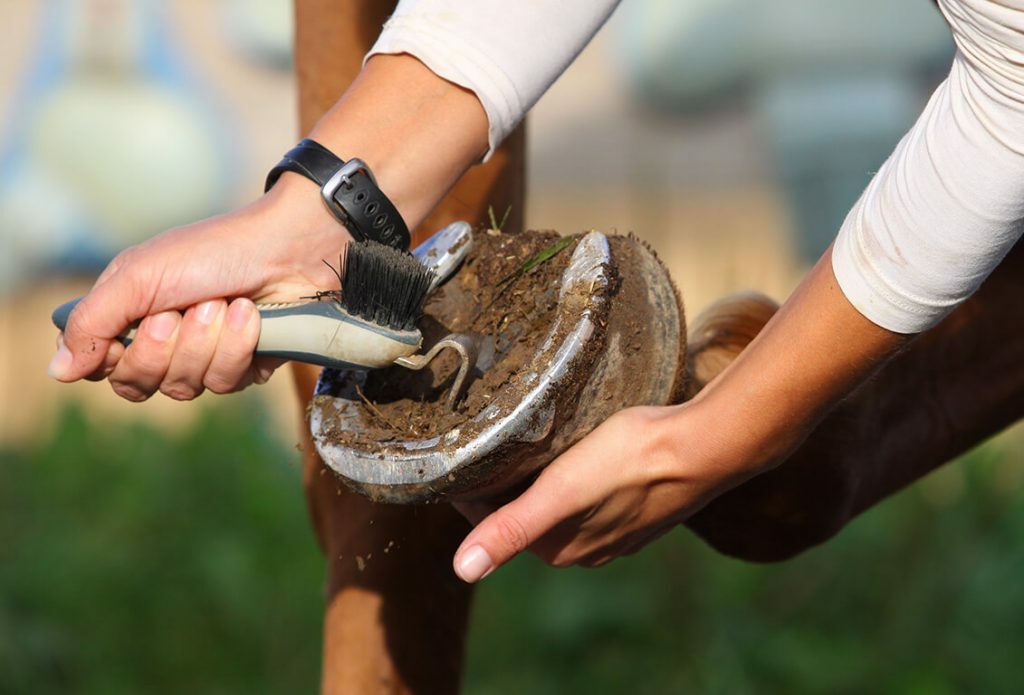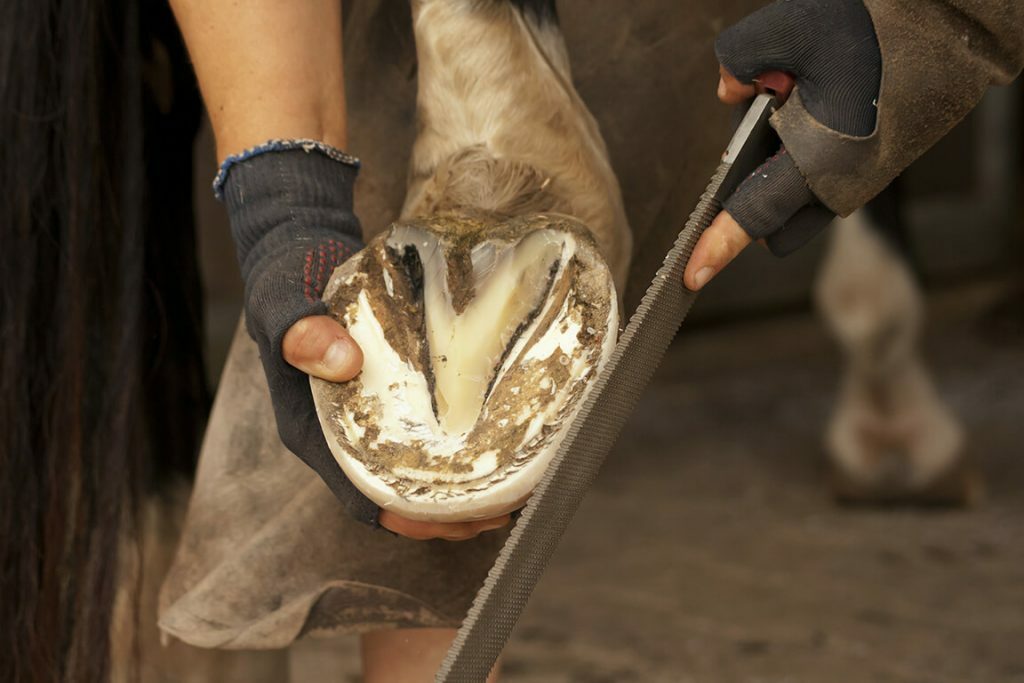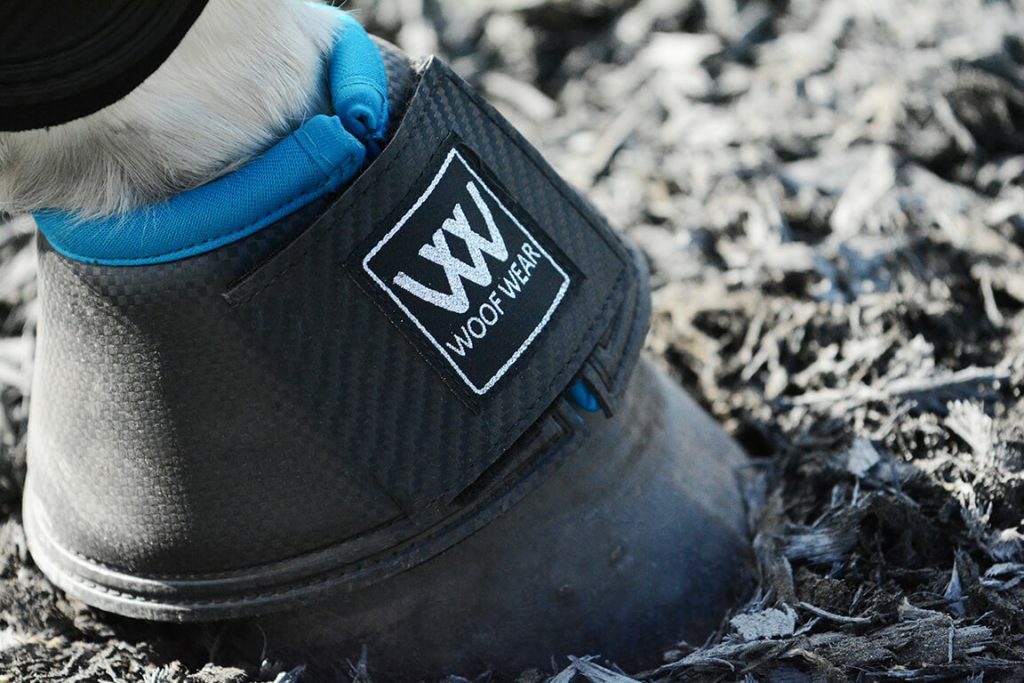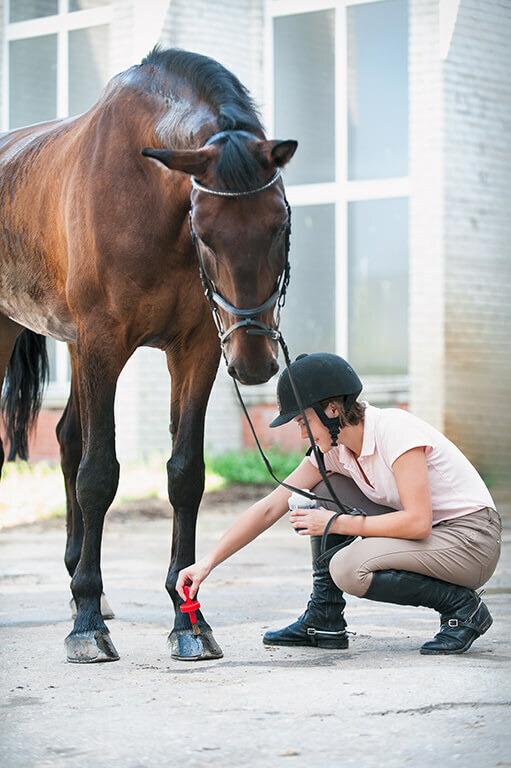Top tips for looking after your horse’s hooves
Jun 9th 2020
Your horse’s hooves are impressive things. With a relatively small surface area, their complex structure supports the weight of the horse, and often a rider, which is why they need special care. Luckily, there is plenty you can do to ensure your horse is given the best foundation for healthy hooves.
Here are a few top tips you can put into practice to ensure your horses hooves are in as good condition as possible, including:
- Hoof picking
- Farrier visits
- Hoof protection
- Providing good conditions
- Watching out for winter hazards
Read our guide for the full information…
What are your horse’s hooves made of?
The most visible part of the hoof is the hoof wall which grows from the coronary band at the top. Made from horizontal layers of keratin, it protects the sensitive foot inside. As horses walk on their tip toes, there is a soft cushion to absorb impact on the heel, supported externally by the ‘frog’ at the bottom of the hoof. The indent in the middle is the sole of the hoof. When this structure is damaged or disrupted, infection and pain can set in. It is important you know the signs of an injured or unhealthy hoof.
How to care for your horse’s hooves
While plenty of hoof issues can easily be put right, a severe hoof problem can lead to lameness. The saying “no hoof no horse” is very true therefore crucial that you maintain healthy hoof care to keep your equine friend on his or her feet!
Here are some of the most important things you should be doing to look after your horse’s hooves…
Hoof Picking

This is one of the basics of hoof care and is one of the best things you can do to keep your horse in good shape. You should pick your horse’s hooves every day, both before and after you ride them, and before and after turnout. Make sure you pick out any stones or other debris stuck in the hoof and brush out dirt gathered in the sole. While you are here, you should also check for signs of any damage or infection that may be emerging. Be sure you have a backup hoof pick on hand so your horse never suffers trapped objects in their hoof which can lead to punctures, bruised soles or abscesses.
Farrier Visits

While you can do your part day-to-day in keeping hooves clean, you also need a farrier to spot any serious problems and correct anything going off track. Regular trimming and balancing of hooves can help prevent infections such as white line disease, while your farrier can also offer help with laminitis. Horses’ hooves can grow between 1/4 inch to almost half an inch per month and an entire new hoof can grow in a year! While wild horses would naturally tread down their hoof growth by seeking food across rough ground, your stabled horse is very unlikely to do so. A farrier should come to check, trim and shoe your horse every six to eight weeks.
Hoof Protection

Prevention is often better than a cure. Bell boots cover the entire hoof and can be worn while riding, in the stable or turned out. They can also be used if your horse needs a little extra protection if recovering from a hoof injury. If your horse jumps or over reaches it may be particularly important to protect the hooves and heel bulbs from any painful knocks that might require veterinary care, these boots can help prevent this. See our full range of overreach boots.
Provide the Best Conditions

You need to give your horse everything he or she needs to let healthy hooves grow! While some horses are genetically predisposed to weak or thinning hooves, a nutritional diet or supplements can help support healthy hooves. Check with your vet if you are concerned that your horse’s diet is lacking. Also, be considerate of ground conditions when turning out or riding your horse. Standing in damp and mud for long periods can result in bacterial infections such as thrush. Hoof oils and ointments can help keep moisture out of the hoof. During particularly hot or dry conditions, can prevent hooves from become too dry or chapped so is important to use regularly.
We hope this has given you some starting points for keeping your horses hooves in tip top shape. Don’t forget to shop our full range of horse supplies and equipment to meet all your equestrian needs!



